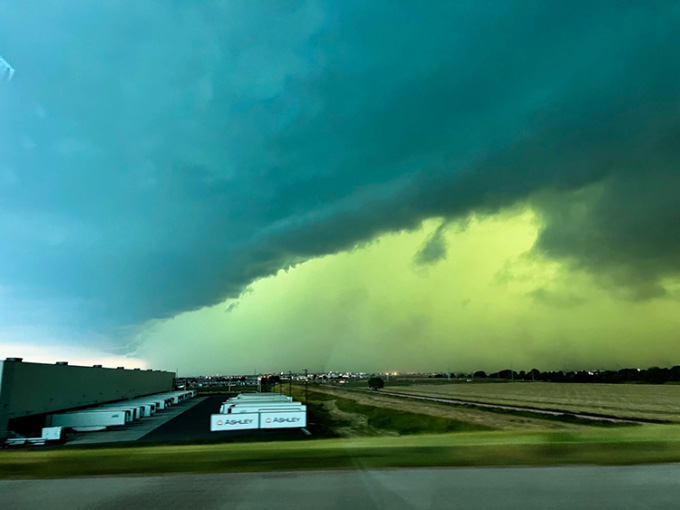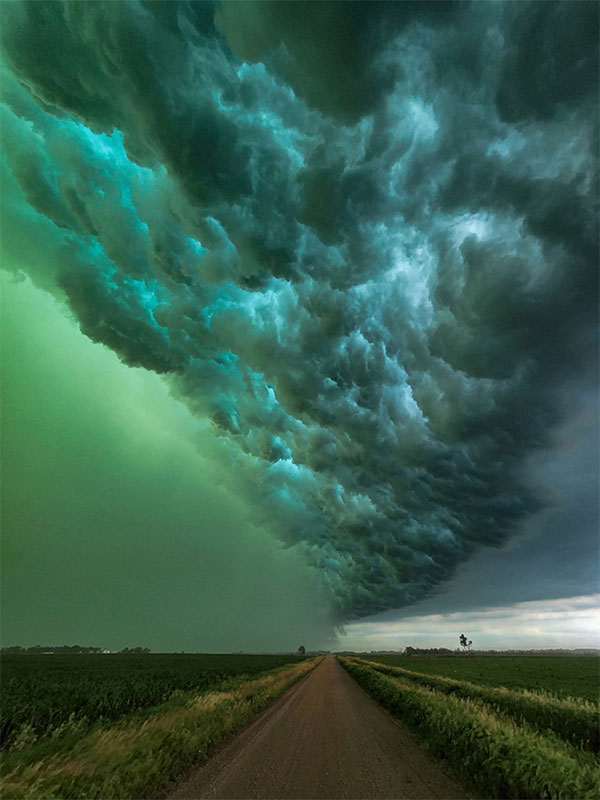The sky in Sioux Falls turned an unusual shade of green just before a derecho storm swept through South Dakota on July 5th.

The sky in Sioux Falls turns green before the derecho storm. (Photo: John Homenuk)
Residents of Sioux Falls are accustomed to derecho storms—widespread storms accompanied by thunder and lightning that move quickly and are associated with Mesoscale Convective Systems (MCS)—but the sight on the afternoon of July 5th was unprecedented for many.
According to Peter Rogers, a meteorologist at the Sioux Falls Weather Service office, the sky took on a murky green hue as the storm approached the city, lasting for about 20 minutes.
“This caught the attention of many people, and I guess it will become a topic of discussion for quite some time,” Rogers shared.
The researcher noted that the phenomenon of the sky changing color before or during a storm depends on how sunlight interacts and scatters with various particles in the atmosphere.

Apocalyptic scene as the derecho storm sweeps through Sioux Falls. (Photo: Nathen Erickson)
Meteorologist Isaac Longley at AccuWeather explained that the Sun appears redder in the late afternoon as it approaches the horizon. However, the light beneath a tall thunderstorm cloud often appears blue due to the scattering of water droplets. When the blue light is illuminated by the red light from the setting Sun, it displays a green color.
A green sky before or during a thunderstorm can be a sign of severe hail. The Weather Service recorded several reports of scattered hail in Sioux Falls, with sizes around 2.5 cm.
With wind gusts reaching up to 160 km/h, the derecho storm that swept through South Dakota on Tuesday also caused widespread power outages, toppled many trees, and damaged several buildings, fortunately with no reports of injuries or fatalities.
Derecho storms primarily occur in the summer, particularly in June, July, and August in the Northern Hemisphere, or March, April, and May in the Southern Hemisphere. In many cases, like in Sioux Falls, the winds generated by the mesoscale convective system take on a curved shape, creating C-shaped shelf clouds. This convective system tends to move eastward or toward the equator.


















































